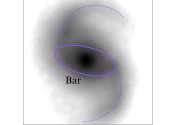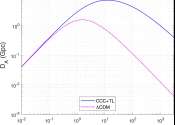The Big Bang is the cosmological model of the initial conditions and subsequent development of the universe that is supported by the most comprehensive and accurate explanations from current scientific evidence and observation. As used by cosmologists, the term Big Bang generally refers to the idea that the universe has expanded from a primordial hot and dense initial condition at some finite time in the past, and continues to expand to this day.
Georges Lemaître proposed what became known as the Big Bang theory of the origin of the Universe, although he called it his "hypothesis of the primeval atom". The framework for the model relies on Albert Einstein's general relativity and on simplifying assumptions (such as homogeneity and isotropy of space). The governing equations had been formulated by Alexander Friedmann. After Edwin Hubble discovered in 1929 that the distances to far away galaxies were generally proportional to their redshifts, as suggested by Lemaître in 1927, this observation was taken to indicate that all very distant galaxies and clusters have an apparent velocity directly away from our vantage point: the farther away, the higher the apparent velocity. If the distance between galaxy clusters is increasing today, everything must have been closer together in the past. This idea has been considered in detail back in time to extreme densities and temperatures, and large particle accelerators have been built to experiment on and test such conditions, resulting in significant confirmation of the theory, but these accelerators have limited capabilities to probe into such high energy regimes. Without any evidence associated with the earliest instant of the expansion, the Big Bang theory cannot and does not provide any explanation for such an initial condition; rather, it describes and explains the general evolution of the universe since that instant. The observed abundances of the light elements throughout the cosmos closely match the calculated predictions for the formation of these elements from nuclear processes in the rapidly expanding and cooling first minutes of the universe, as logically and quantitatively detailed according to Big Bang nucleosynthesis.
Fred Hoyle is credited with coining the term Big Bang during a 1949 radio broadcast. It is popularly reported that Hoyle intended this to be pejorative, but Hoyle explicitly denied this and said it was just a striking image meant to emphasize the difference between the two theories for radio listeners. Hoyle later helped considerably in the effort to understand stellar nucleosynthesis, the nuclear pathway for building certain heavier elements from lighter ones. After the discovery of the cosmic microwave background radiation in 1964, and especially when its spectrum (i.e., the amount of radiation measured at each wavelength) sketched out a blackbody curve, most scientists were fairly convinced by the evidence that some Big Bang scenario must have occurred.









